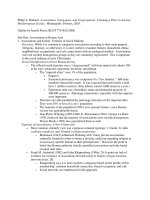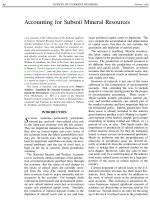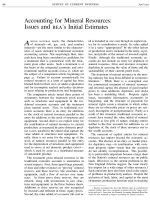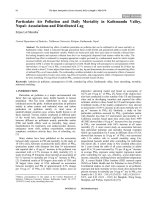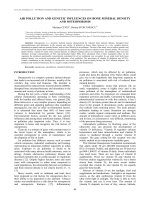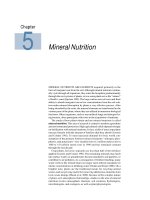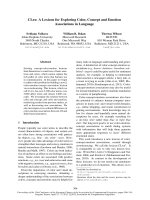Metamorphic mineral associations
Bạn đang xem bản rút gọn của tài liệu. Xem và tải ngay bản đầy đủ của tài liệu tại đây (1.54 MB, 14 trang )
Metamorphic
Rocks
What causes metamorphism?
•Heat
•Pressure
•Reaction with fluids
What changes during metamorphism?
• Mineralogy changes
– New minerals form that are stable under the
new metamorphic conditions
•
•
Polymorphic transformations
Mineral reactions
• Rock texture changes
– Foliation can develop in response to stress
– Minerals recrystallize
•
Polymorphic transformations
Kyanite === sillimanite
Calcite === Aragonite
•
Mineral reactions
Chlorite + muscovite === staurolite + biotite + quartz + H2O (dehydration)
Staurolite + muscovite + quartz === sillimanite + biotite + H 2O (higher T & P)
Calcite + quartz === wollastonite + CO2 (decarbonation)
For a given parent rock, the sequence of new minerals with
increasing temperature and pressure indicates the
metamorphic grade – these are index minerals
Index minerals can
be mapped over
large areas, to
show regions of
similar
metamorphic
grade. The
boundaries are
called isograds.
Metamorphic Grade
= intensity of metamorphism
Low
Intermediate
High
Recrystallization – minerals grow and
develop an interlocking texture
Quartzite –
metamorphosed
sandstone
Marble –
Metamorphosed
limestone
Metamorphic rocks are classified by:
Parent rock
Temperature and pressure conditions
Parent rocks (protoliths) control the elements that are
available to form minerals:
• Pelitic (shales and siltstones, Al rich)
• Mafic (basalts, greywackes, Mg and Fe rich)
• Carbonate or calc-silicate (limestones, Ca and Mg
rich)
See Appendix C in textbook for other associations
Metamorphic
grade
Page 197
Metamorphic
facies:
Minerals in calc-silicate rocks:
Grade:
Low:
Medium:
High:
talc, calcite, dolomite
tremolite, calcite, dolomite
diopside, grossular and andradite garnets,
calcite, dolomite
Very high (contact): wollastonite

